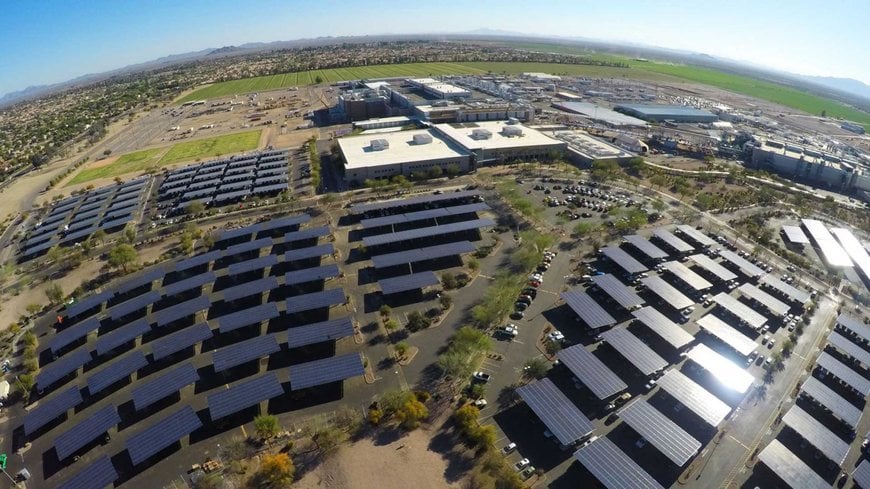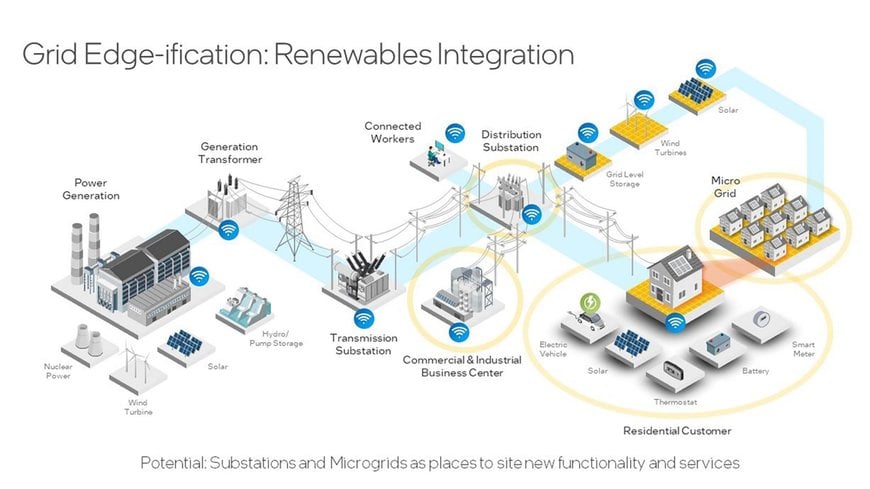www.industry-asia-pacific.com
13
'21
Written on Modified on
The Technology Solution to the Power Grid’s Battle with Climate Change
Intel technology presents an alternative solution to shutting off energy lines in times of crisis.

By Mike Bates
When the Texas power crisis hit in February, my family and I were among the millions of people stuck in a deadly blackout in freezing temperatures because of a massive electricity generation failure. Certain areas of the grid, like hospitals, remained illuminated to support critical infrastructure, but this also meant that nearby empty skyscrapers kept power that otherwise could have been redirected to residents in their homes and others who needed it.
These problems aren’t limited to Texas. As I write this, devastating wildfires along the West Coast are threatening the power supply of millions more and forcing the energy system to adapt fast. We’re seeing more frequent severe weather events due to the impacts of climate change.
When crises strike, one of the most important elements for recovery is reliable power. However, our outdated energy grid lacks the ability to direct energy where it is needed most during these crises. Instead, current solutions to mitigate the outdated grid include turning off energy lines and implementing rolling blackouts to avoid further devastation. But those solutions are unsustainable, archaic and of little comfort if you’re reduced to boiling water over an open fire.
The current energy grid structure is vulnerable and difficult for providers to navigate. It was built to support a one-way flow of mostly carbon-based power from centralized sources. It doesn’t have the ability to quickly pivot in times of need or to support the 100% renewable energy critical to meet global climate goals like President Biden’s proposal to create a carbon pollution-free power sector by 2035.
We must move to renewable energy sources and build a smarter grid. For this, Intel has created a technology solution to drastically simplify the grid, making it more dependable, adaptable and efficient.
Increased Usage of Renewable Energy Sources
To mitigate climate-change impacts, we need a grid that can better support renewable energy. Not only will these sources create a clean energy future, but they are distributed at the edge of the grid and across multiple areas. The result is a more resilient grid that is no longer dependent on power sources in a central location that can create potentially devastating bottlenecks in times of emergency.
We also need a smarter grid. It must support omni-directional flow both from and to the source of generation, which renewable energy sources require, and balance for intermittent energy (like solar and wind) in real time. This gives the energy provider the flexibility to distribute energy where and when it is needed most, while giving customers the information needed to make environmentally conscious and cost-effective energy choices.
The transformation to a smart grid may seem daunting, but our solution drastically simplifies it. Ambitious climate action has already turned the electric delivery model upside down and the industry is currently going through a rapid and massive evolution.

Renewable energy sources are often distributed at the edge of the grid. Intel's solution can better integrate the sources, resulting in a more resilient grid that is more dependable, adaptable and efficient.
Intel Technology as the Key Enabler for Smart Grid Solutions
My team at Intel has been working on a first-of-its-kind compute solution that can be easily deployed into the existing infrastructure to create a smarter grid and readily adapt to changing energy consumption needs. Our solution implements artificial intelligence (AI) and Internet of Things (IoT) technologies into the existing system, thereby “flattening the grid” and allowing the market to determine the highest and best energy source, regardless of its physical location on the grid. A flat grid enables 100% adoption of clean, renewable and intermittent energy to be integrated into real-time energy markets.
Currently, utility operations have layers of applications that have been added over time and do not always work cohesively. Our software-defined technology consolidates these applications into a single platform while also supporting new energy workloads, like enabling clean sources distributed at the edge of the grid. This platform includes AI-enabled decision-making to sense and learn optimal load balancing across a distributed set of intermittent, clean energy resources. A containerized approach ensures the applications remain isolated and secure. This platform reduces capital costs by avoiding waste and distributing energy in the most efficient way possible. It also reduces operating costs by offering insight into each substation and supporting predictive maintenance.
Collaborating to Optimize the Energy Grid
Intel has been working with governments, businesses and utilities around the globe to implement these smart grid solutions. In Europe, we’re working with eight major electric utilities to develop a flexible, manageable smart grid called the Edge for Smart Secondary Substation (E4S) Alliance. In the United States, we’re working with Southern California Edison to transform electrical substation relays into virtualized applications – decreasing deployment and maintenance costs while providing cybersecurity services for a more flexible, safe and modern grid. And in Malaysia, we are collaborating with Tenaga Nasional Berhad on the digitalization of its electric grid, with a focus on virtualized computing infrastructure and applications for the substation and grid system.
Increasing renewable energy consumption and enabling clean energy options is a key part of the sustainability pillar in Intel’s RISE strategy, but reinventing the grid is a challenge that is too big to tackle alone. By leveraging our comprehensive technology and unique ability to convene an ecosystem of utilities, governments and technology, we can transform energy grids across the globe and bring reliable, renewable power to all.
www.intel.com

